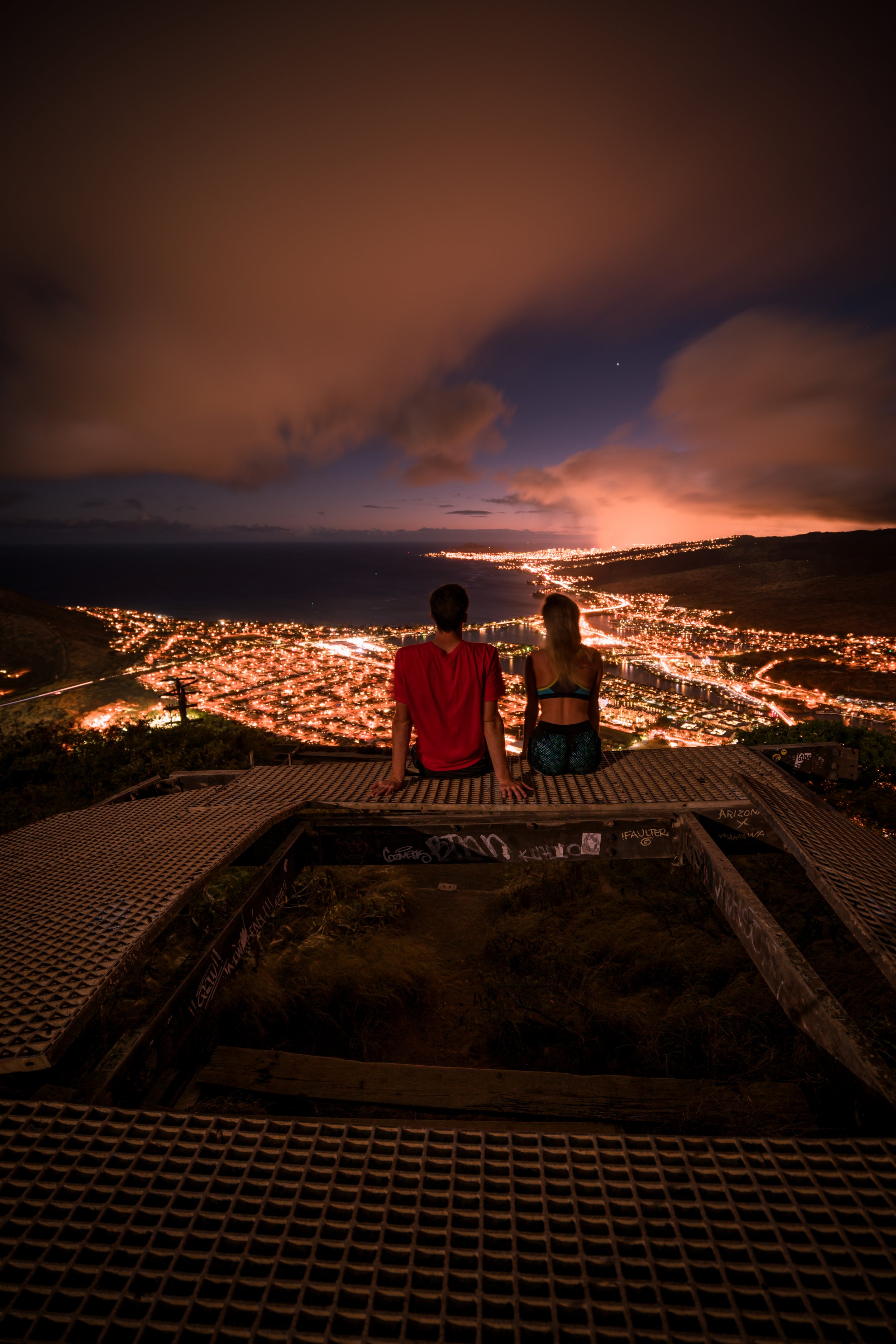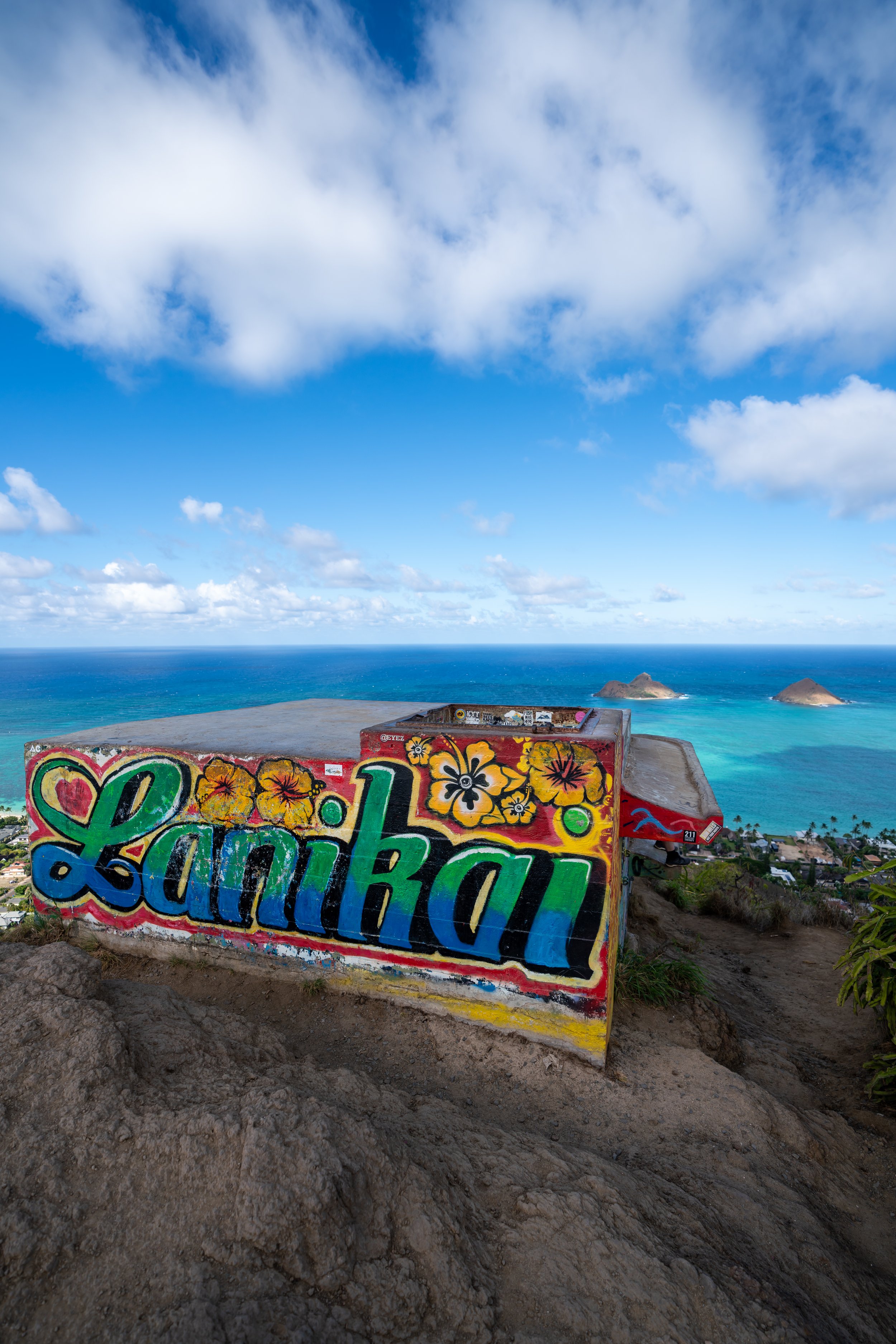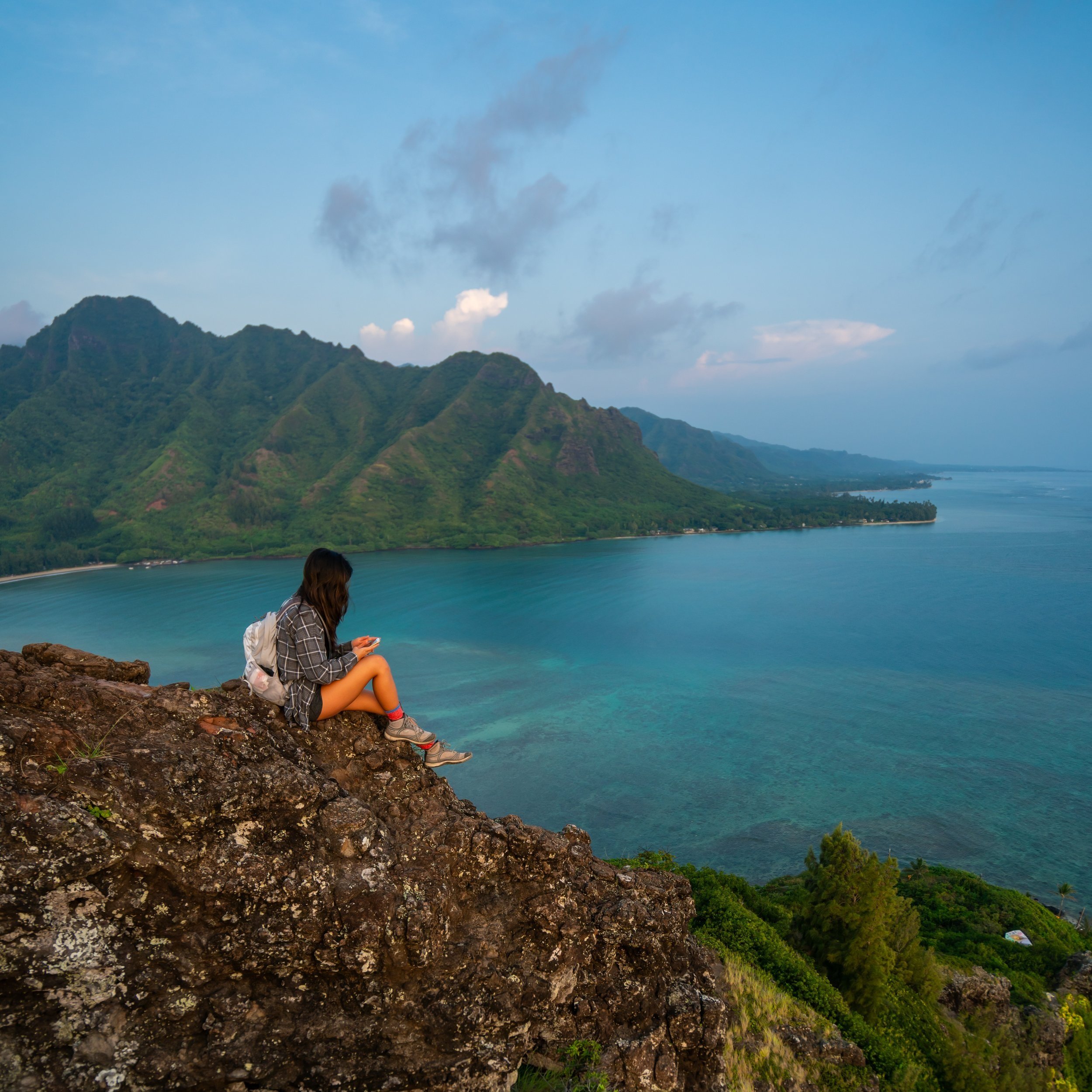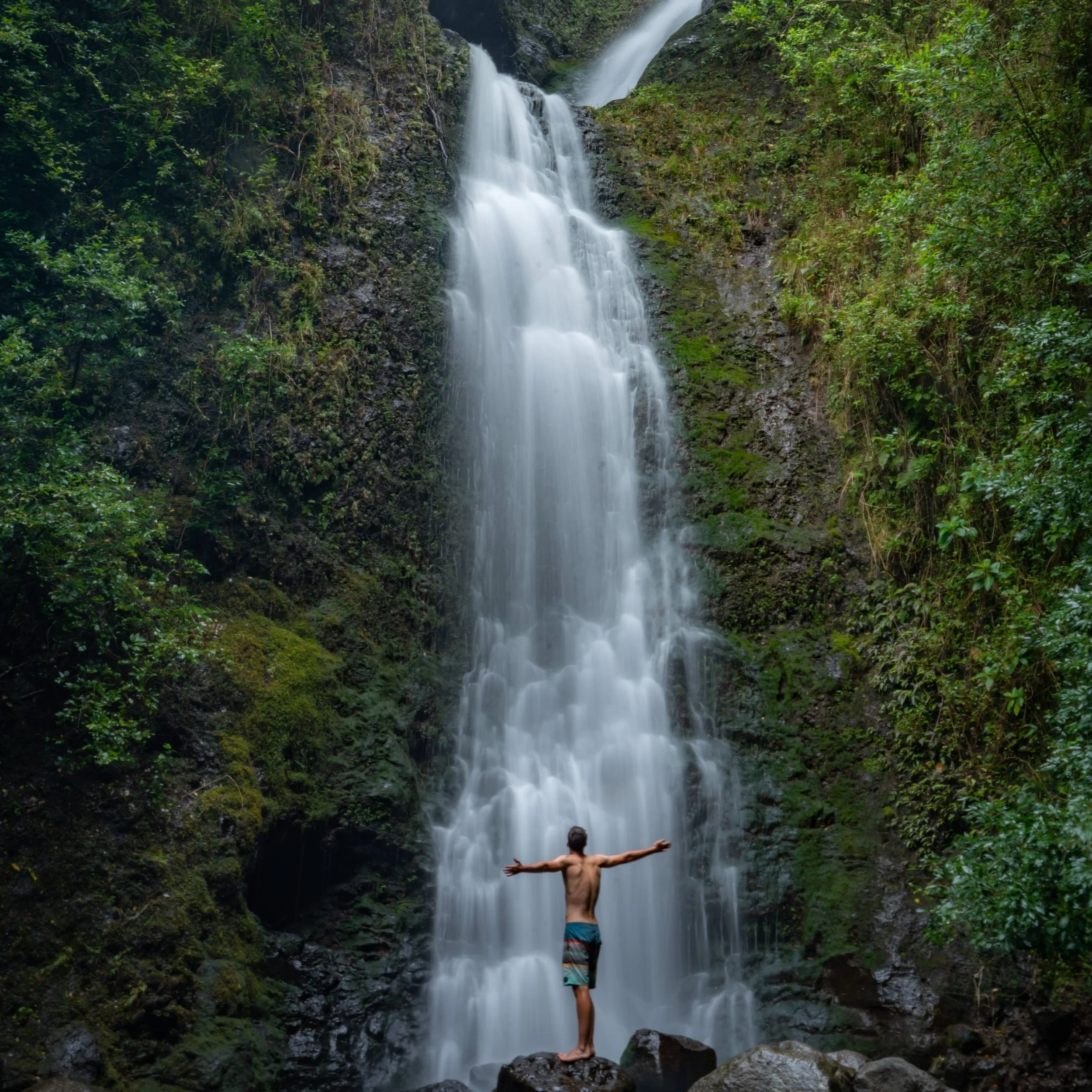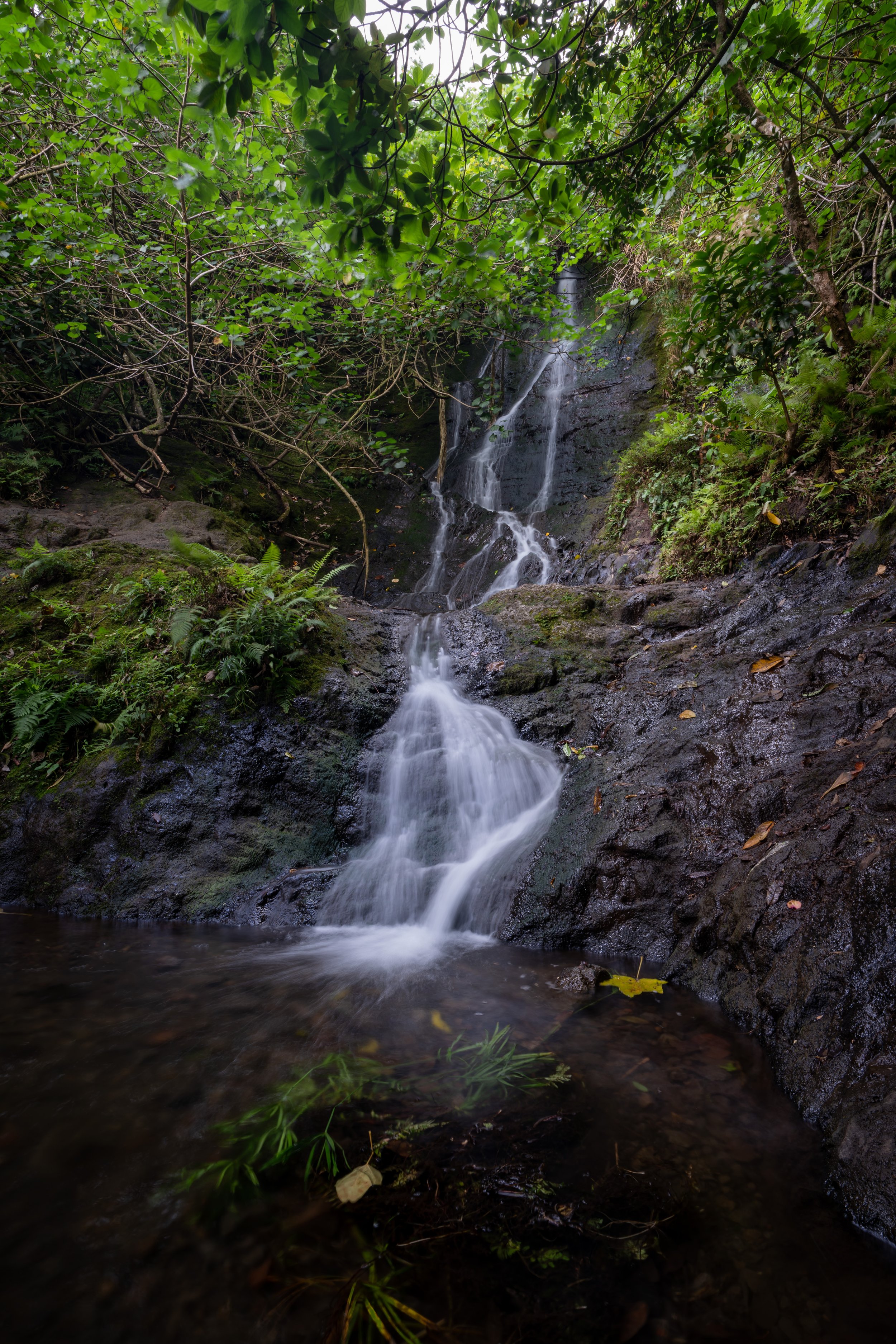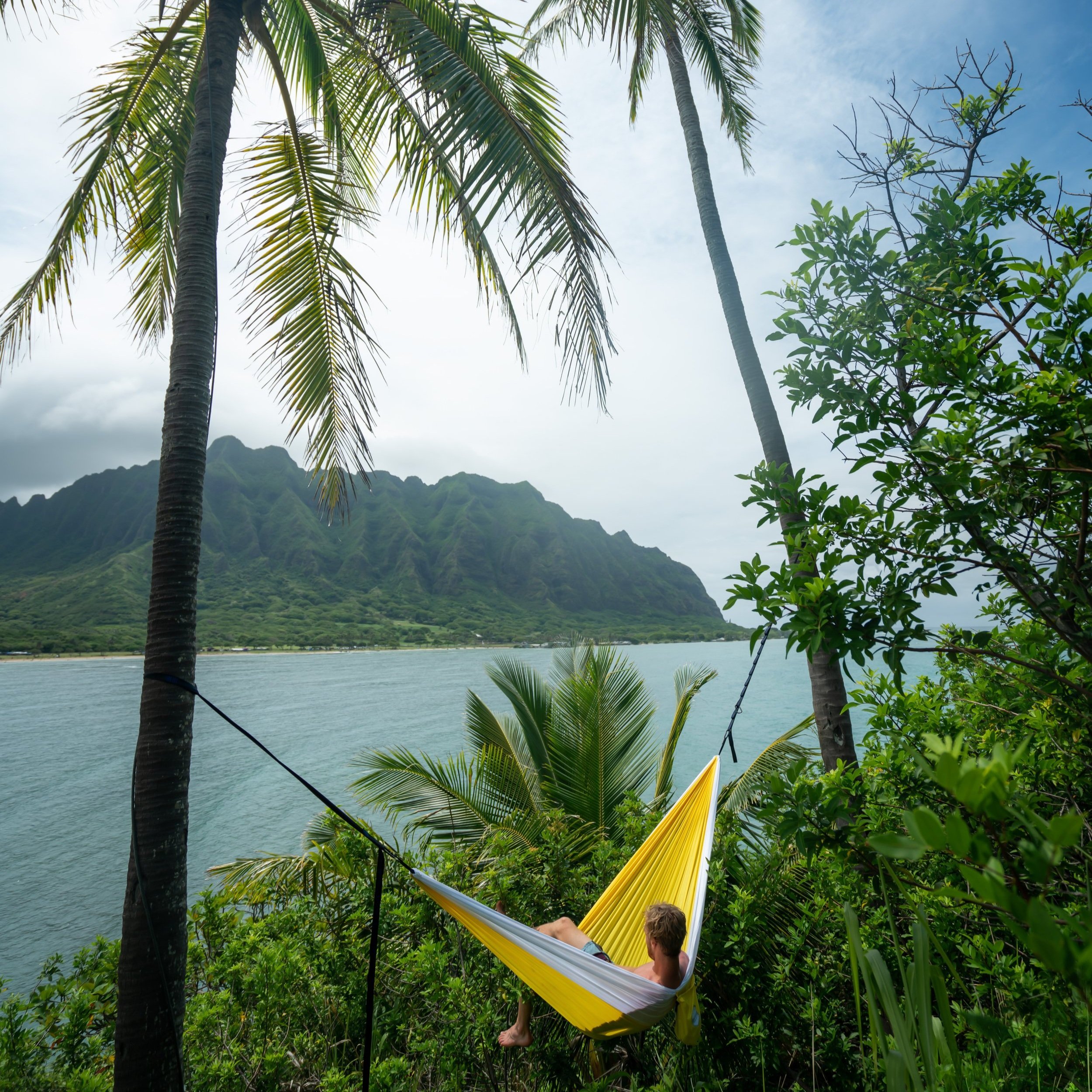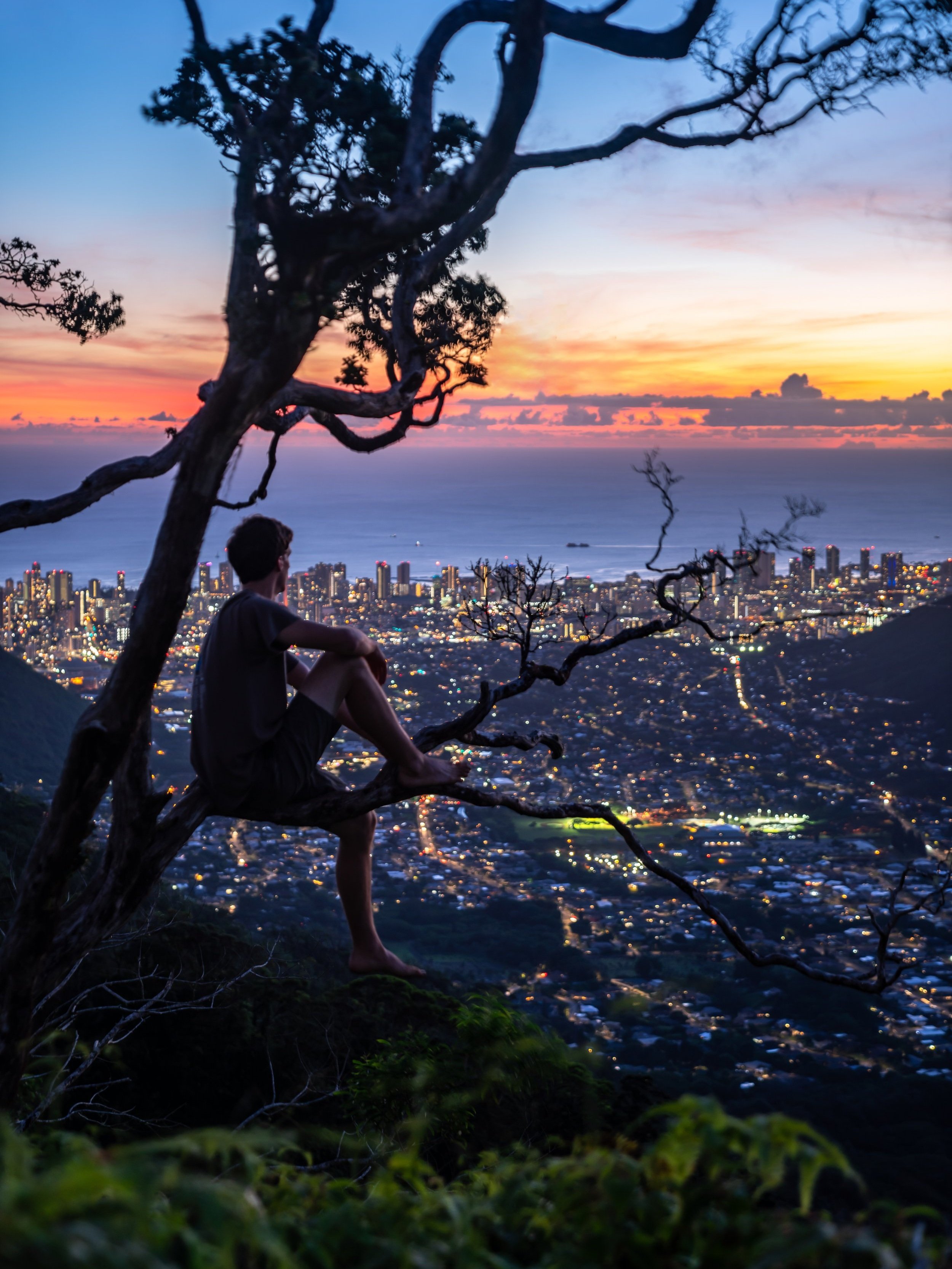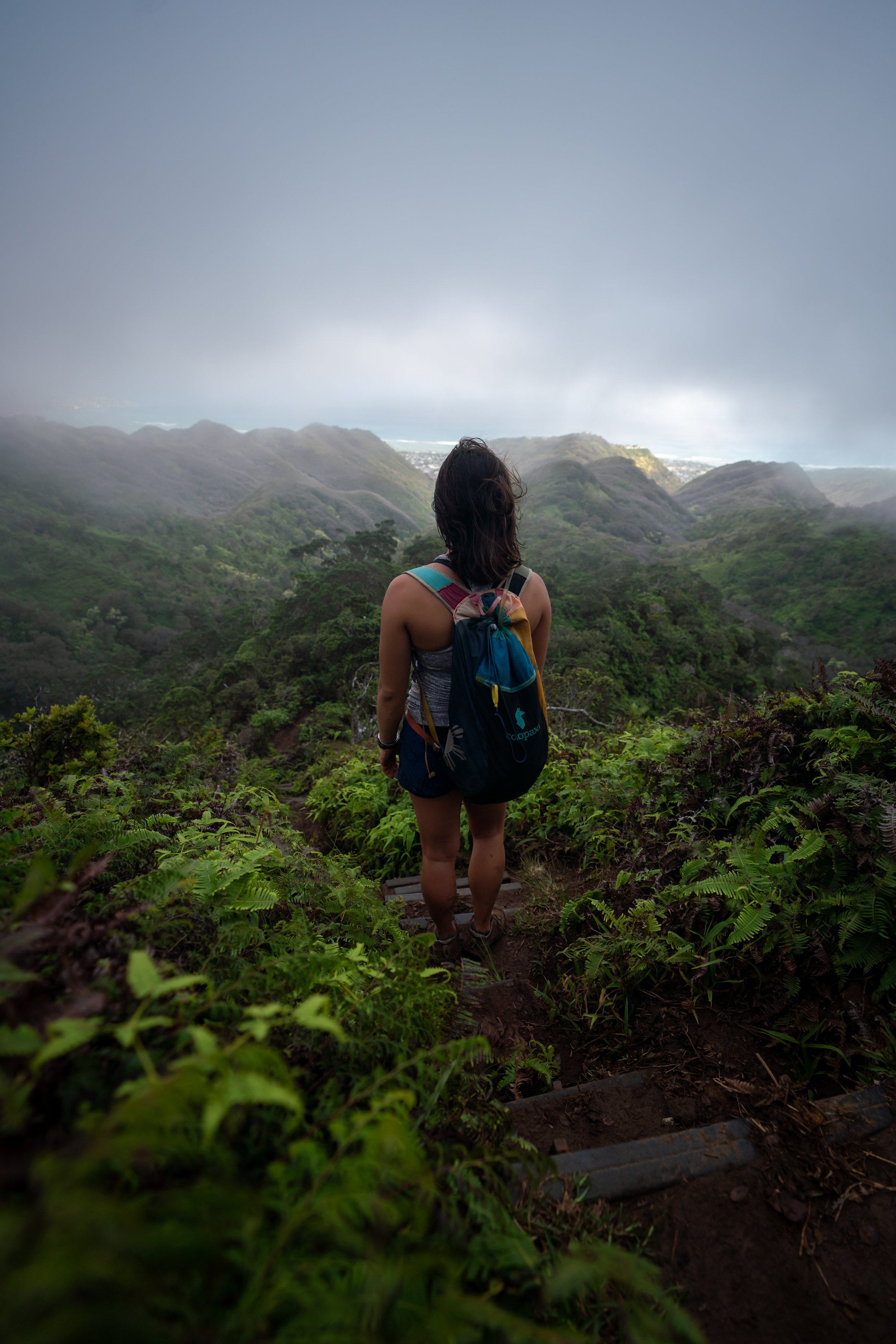Hiking the Makapuʻu Tide Pools Trail on Oʻahu, Hawaiʻi
Distance: 2.2 miles / 3.5 km
The Makapuʻu Tide Pools Trail on the east side of Oʻahu is a fun local and visitor favorite that leads down the steep cliffs of Makapuʻu Point to some of the most beautiful turquoise-blue tide pools on the island, comparable only to the tide pools along the North Kaʻena Point Trail.
It is for these reasons that the Makapuʻu Tide Pools Trail is one of my personal favorite Oʻahu sunrise hikes, as first light hitting the turquoise-blue water early in the morning is truly something special to experience!
Now, this all goes without saying that the Makapuʻu Tide Pools Trail is far more challenging than the easy and paved Makapuʻu Lighthouse Trail to get to the junction that leads down to the water.
This is because the Makapuʻu Tide Pools Trail traverses a very short but steep cliffside down a narrow, rocky, unmaintained path, which is to say that hiking to the Makapuʻu Tide Pools is absolutely beyond some people’s ability. There’s really no nice way to say it.
However, as long as you prepare for this off-trail adventure with good footwear, the hike to the Makapuʻu Tide Pools can be a fun and often uncrowded Oʻahu adventure!
Makapuʻu Tide Pools Trailhead Parking
Parking for the Makapuʻu Tide Pools Trail is located in a paved parking lot off Kalanianaʻole Highway in east Honolulu, the same parking area that serves the popular Makapuʻu Point Lighthouse Trail.
Before arriving, know that parking can be difficult to find on any given day of the week, because the Makapuʻu Lighthouse Trail is so popular. This is especially true during the midday hours and on weekends, which often means the only available parking is out along the highway.
Furthermore, sunrise is a great way to avoid both the crowds and the heat on the exposed Makapuʻu Lighthouse Trail, but know that the gate doesn’t open until 7 a.m., which is not early enough to make it up the trail in time to see the sunrise—meaning that sunrise hikers will also need to find parking out along Kalanianaʻole Highway.
Out of caution, consider the Makapuʻu Tide Pools Trailhead to be a high-crime area for petty theft, meaning you should never leave visible bags or anything valuable in your car.
Google Maps Directions: Makapuʻu Tide Pools Trailhead
My Hawaiʻi Hiking Checklist
Hiking the Makapuʻu Tide Pools Trail
The Makapuʻu Tide Pools Trail begins on the paved Makapuʻu Lighthouse Trail at the far southern end of the parking lot, which it will follow for roughly 0.8 miles (1.3 km) before branching away to begin the true Makapuʻu Tide Pools Trail.
To skip ahead to the Makapuʻu Tide Pools junction, click here.
Makapuʻu Tide Pools-Kaʻiwi Shoreline Junction
Almost immediately after beginning the Makapuʻu Lighthouse Trail, the paved path will split with a dirt path heading downhill toward the water.
This is the northern trailhead for the Kaʻiwi Shoreline Trail, and it’s one of two trailheads that hikers can begin on the Kaʻiwi Coast. The other is located at Kaloko Beach just down the road.
Furthermore, this Kaʻiwi Shoreline Trailhead is the fastest and most direct route to Alan Davis Beach—the most popular destination along the Kaʻiwi Coast—about 0.25 miles (0.4 km) away from this point.
However, to stay on the Makapuʻu Lighthouse Trail toward the Makapuʻu Tide Pools, go straight to continue hiking up the paved path.
Read My Separate Post: Kaʻiwi Shoreline Trail
After the Kaʻiwi Shoreline junction, the Makapuʻu Lighthouse Trail begins climbing up to Makapuʻu Point, where it will gain about 300 ft. (91 m) of elevation from the trailhead to the Makapuʻu Tide Pools junction at the third lookout.
That said, this first half of the hike, to the second viewpoint just after Puʻu ʻOkīpahulu, is often considered the most challenging half of the paved Makapuʻu Lighthouse Trail because there are very few flat areas—not to mention that the ridge on the left blocks much of Hawaiʻi’s trade winds, making this stretch particularly hot—especially in the summer!
This is the view looking south toward the Koko Crater Rim and the Koko Crater Botanical Garden, on the inside of the volcanic crater.
If there’s one thing I hope these photos show more than anything else, it’s that there’s essentially no shade on the Makapuʻu Tide Pools Trail.
This is why I highly recommend hiking the trail in a hooded sun shirt, which is even more important if you plan to extend your day by hiking the Kaʻiwi Shoreline Trail down to Alan Davis Beach.
There aren’t many native plants along the Kaʻiwi Coast, as the majority of the landscape is dominated by non-native trees and grasses, but if you look on the uphill side of the Makapuʻu Trail, there are a few to find along these rocky ledges, like this Abutilon and ʻUhaloa.
Puʻu ʻOkīpahulu
When the Makapuʻu Lighthouse Trail reaches this sharp bend to the north, the steepest parts of the paved trail—not the entire hike—are behind you!
In addition, this bend around Puʻu ʻOkīpahulu is where hikers can begin to see Molokai, Maui, and Lānaʻi on a clear day!
That said, differentiating between the islands in Maui County can be difficult if you aren’t familiar, as the Molokai Sea Cliffs are often confused for Haleakalā on Maui, since they are closer to Oʻahu. However, there is a diagram at the next viewpoint that I recommend checking out to help you understand exactly what you’re seeing.
This second viewpoint is roughly the halfway point on the hike up to the Makapuʻu Point Lookout, and it’s the spot mentioned earlier where hikers can find a detailed photo outlining the view looking east toward Maui County.
This is the view looking east at what is mostly Molokai in the photo below.
The Molokai Sea Cliffs and mountains form the tall, shaded outline on the left side of the island, and if Maui were visible in this photo, it would appear over the lower elevations on Molokai that make up the right side of the image.
After the halfway point, the Makapuʻu Lighthouse Trail continues to gain elevation, but this is where the trade winds often begin to make the hike much more comfortable compared to the beginning!
Makapuʻu Tide Pools-Makapuʻu Point Lighthouse Junction
After about 0.8 miles (1.3 km), the Makapuʻu Tide Pools Trail leaves the paved Makapuʻu Lighthouse Trail to begin descending the cliffside to the tide pools below.
Warning
That said, I want to stress that the Makapuʻu Tide Pools Trail is far more difficult and dangerous than the Makapuʻu Lighthouse Trail, as the Tide Pools Trail from this point on descends about 370 ft. (113 m) down a very steep, loose, rocky path.
In addition, the Makapuʻu Tide Pools Trail is exceptionally hazardous because of the open ocean swell that crashes into the coastline, creating huge waves that break over the edge, which has unfortunately resulted in very serious injuries and fatal accidents in the past.
I write all this to say, you accept full personal and legal responsibility if you decide to leave the paved, maintained trail up to Makapuʻu Point.
Read My Separate Post: Makapuʻu Point Lighthouse Trail
This is where the steep descent to the Makapuʻu Tide Pools begins.
Similar to the first half of the hike, more native plants can be found growing along the ocean side Makapuʻu Point, but on the windward side of the ridge, the plant community shifts to reflect a more coastal landscape, like this ʻIlima along with others such as Pāʻū o Hiʻiaka.
In my experience, the arrows on the Makapuʻu Tide Pools Trail have faded and been replaced over the years, but know that there is one central path to follow.
I say this because, if you ever feel like you’re off track, take a few steps back, and the correct trail will likely make sense again by simply looking around for a better path.
At really no point on the steep 0.3-mile (0.5 km) descent to the tide pools is the trail ever flat, which is why some hikers may want to carry trekking poles—especially for the very loose terrain near the bottom.
When the Makapuʻu Tide Pools Trail reaches this hard switchback to the south, the rest of the descent begins a long series of very short back-and-forth switchbacks, with the lower elevations braiding out the most as the trail approaches the tide pools.
This is where the Makapuʻu Tide Pools Trail starts to get particularly loose, and it’s also where the main trail begins to branch out in a few different directions down the cliff.
If there’s one thing I hope these photos show, it’s that the descent is very loose and slippery, meaning that even though you’re there to swim, don’t forget to properly prepare for the hike with good, closed-toe hiking shoes.
Personally, I recommend a good pair of trail runners, like the ones I use linked below.
As the Makapuʻu Tide Pools Trail nears the bottom, all the trails that spread out above should come back together into one easiest path for the rest of the hike to the pools.
Makapuʻu Tide Pools (Warning)
The end of the Makapuʻu Tide Pools Trail is this small cluster of coastal tide pools that constantly have water flowing into them from huge waves that crash into the rocky coast and wash onshore.
That said, the tide pools themselves are the most dangerous part of the entire hike, which is why I previously mentioned that fatal accidents have occurred here in the past.
This is why I strongly want to warn against getting anywhere near the coastline, and note that even if you’re enjoying the mauka side of the pools, waves will still reach you.
In addition to this, sea urchins are the next biggest concern when visiting the Makapuʻu Tide Pools, which is why swimming with some kind of footwear is recommended—not to mention that good shoes make walking on rough lava rock much easier.
This is all to say that the Makapuʻu Tide Pools are just as beautiful as they are dangerous, and it’s why I strongly warn against taking your eye off the open ocean as you enjoy your time at the pools.
These are the two main Makapuʻu Tide Pools, which can best be enjoyed by hiking in with a good mask and snorkel.
Native Plants on the Makapuʻu Tide Pools Trail
The Makapuʻu Tide Pools Trail—and all of the Kaʻiwi Coast, for that matter—is a heavily invaded coastline covered in non-native, invasive trees, such as Koa Haole and Fountain Grass.
However, there are a number of native plants that can be seen on the short hike up, including numerous species of Maʻo, ʻUhaloa, ʻAeʻae, Milo, Kou, Pāʻū o Hiʻiaka, ʻAʻaliʻi, and ʻIlima, to name just a few.
If you would like to learn more about these and many other native Hawaiian plants from across the islands, I encourage you to check out my separate post linked below.
Read My Separate Post: Native Hawaiian Plant Guide




